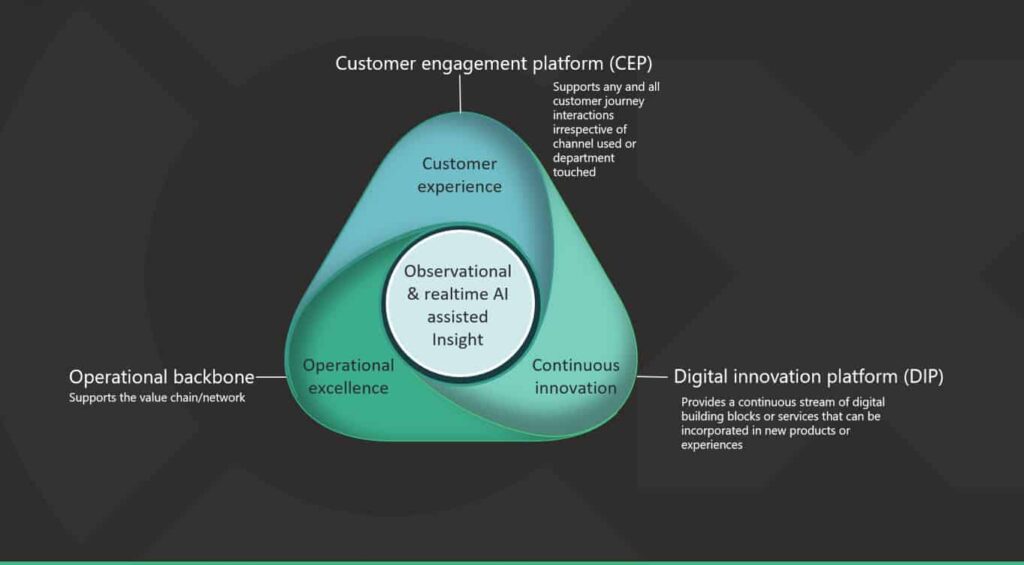As a follow-on from the previous blog: New value disciplines must be mastered for the digital age, let’s take a look at the role of three essential platforms.
To survive and thrive in evermore compressed timescales for change, every enterprise must learn to adapt fast. So adaptability is a critical survival attribute, too often ignored, especially by established companies that have enjoyed success. The Covid-19 pandemic has amplified just how critical this is to survival. To paraphrase the former CEO of GE, Jack Welch: if change is happening faster outside the company than inside, the end is near.
Adaptation must be driven by external forces, particularly those shaping customers’ needs and behaviors as they impact the ability of any company to remain relevant to its customers and others it hopes to attract. In short – to be customer-adaptive.
3 platforms must be developed and connected to support the integrated value disciplines
Each business has its own way of getting things done and an operational backbone (the term used in Designed for Digital, Jeanne W. Ross, et al., MIT Press 2019), supporting applications, such as ERP, finance, SCM, logistics, etc., data, technology, and corporate networks and services. It’s typically a linear set of processes across the value chain or network. The firm creates value through its operations and then markets and sells its products or services to customers directly or via distributors, resellers, or retailers, or eCommerce.
A streamlined and highly automated operational backbone provides a foundation for reliability and trust. Stuff gets done when expected, and if I am the customer at the receiving end, then this provides the first level of reassurance. What I have ordered will arrive on time and in a condition I expect. This is essential but pretty basic. Nevertheless, done well, it enables the business to keep costs down as well as satisfy its customers. It won’t, however, necessarily keep them coming back for more. For that, two essential attributes must be in place – the real growth engines of the business:
- A positive experience across all channels, allowing for digital and physical interactions and providing an easy path across their various journeys
- The ability to innovate continuously to refresh the value each customer receives.
This requires a customer engagement platform that allows customers to interact with a business on their terms and channels of choice. And a digital innovation platform to develop a stream of innovation in services, customer (and employee) experiences, products, or even operational enhancements.
In future blogs, I shall explore the customer engagement platform and its essential technology elements. I shall also comment on each of these platform types in our CX-Tech News, as developments surface.

